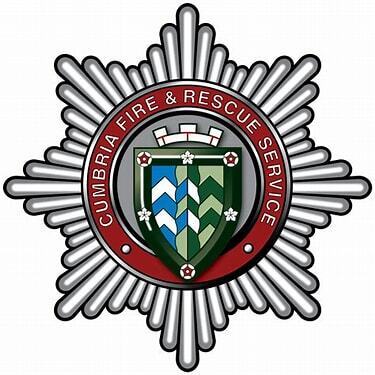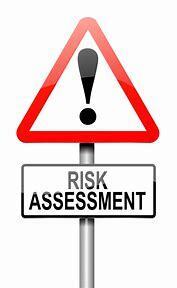March 2022
A Quick Guide to... The use of Emollients and potential fire risks

This Quick Guide has been developed in collaboration with Cumbria Fire & Rescue Service to raise awareness of the fire risks associated with the use of emollients.
Further information for GP's, Pharmacies or Care Providers and advice is available from Emollient skin products | Cumbria Fire & Rescue Service
|
Fire risks

We know emollients are widely used and are important for the treatment of skin conditions such as eczema, psoriasis and bed sores and we support their continued use.
However, scientific testing by Anglia Ruskin University has shown that fabric such as clothing, towelling, bandages or bedding contaminated with emollients containing paraffin, natural oils or other flammable constituents burns quicker and hotter than fabric which has not been contaminated. The tests showed the average time to ignition is approximately 6 seconds.
Testing also demonstrated regular washing of fabrics does not totally remove the risk.
|
Fire fatalities

Since 2010, there have been 56 fire fatalities in the UK where
emollients are thought to have been involved in the rapid
development of the fire. All the people who died were
older, many had restricted mobility and a number had care
plans in place. In 79% of these fatalities, smoking materials
such as matches, lighters and cigarettes were found to be the
ignition source of the fire. There have also been several tragic deaths of residents within care homes have led to the Coroner making recommendations about the appropriate levels of fire safety within care facilities.
Are these deaths avoidable? YES
The issues need urgent consideration and action by all professionals involved across Health & Social Care, to identify critical risks associated with individuals. The Fire Safety Order 2005 requires the identification of individuals at risk as part of the fire safety risk assessment for the premises and to take appropriate action to remove or reduce the risk.
|
Questions to consider
- Is the individual a smoker, cooking or sitting near to a heat source or fire?
-
Are emollients being applied over a large area of the body?
If the answer is Yes, share the risks with:
- Individuals
- GP or Nurse Prescriber
- Family member's
- Carer's
- Seek advice
Fire Assessment

This increased risk of fire posed by smoking whilst using flammable emollient creams is so significant that it must be avoided. Fire retardant covers, bedding or clothing for smokers must be provided, but they may also become contaminated with dried emollient. There is a responsibility of Care Home providers owing a duty of care for the health, safety and wellbeing of individuals who may be at heightened.
A personal Risk Assessment for is critical for the person's own safety and that of other residents, family and carer's or staff. The Risk Assessment will assess the needs of the individual in conjunction with care workers and family and consider their habits, physical and mental capacity, and their environment. The Risk Assessment should be recorded and considered as part of their care plan, other assessments and personal evacuation plans, and kept under review.
Following recent fire deaths in Lancashire the Coroner highlighted that the use of such creams should be risk assessed and action taken to reduce the harm. The use of emollient creams must be considered in your fire risk assessment to ensure that all reasonably practicable steps are taken to
reduce the risk of a fire and its likelihood of occurring.
|
What can you do to help?

Due to the potential fire risks you should, as part of the individual person entered risk assessments you carry out, reduce or mitigate the risks of a fire arising and assess the risk of harm to that person if a fire occurred.
Care Home Provider's can ensure that;
- Staff are informed and kept regularly updated about the potential fire risks of emollients, especially when used by smokers, so that they can monitor and review individual risk assessments effectively and report as appropriate.
- Inform and train staff about appropriate emergency procedures should a fire occur.
- Ensure any previously contaminated towelling and bedding, that has been laundered and tumble dried, is cooled prior to folding for storage.
Pharmacists can help to prevent any further injuries or loss of life to the public by:
- Asking them their smoking status when dispensing or selling emollients to them, advising them of the risks and signposting them to smoking cessation services as appropriate.
- Talking to them about the potential fire risks of emollients when dried onto fabric especially if they are smoking, cooking or going near to an open flame or heat source.
- Recording any advice given on the Patient Medication Record.
- Taking care not to cover up the flammability warning on the product with any labels.
- Referring people back to the GP where they smoke and/or have a condition which places them at high risk of fire such as memory loss, poor concentration or drowsiness; and adding their details to their Patient Medical Record.
GPs can help to prevent any further injuries or loss of life to the public by:
- Considering whether where people smoke and/or have a condition which places them at high risk of fire such as memory loss, poor concentration or drowsiness prior to prescribing emollients.
- Talking to your patients about the potential fire risks of using these products at the point of prescribing and reviewing their medication.
- Sharing this information with your colleagues and teams.
- Displaying and disseminating leaflets and other appropriate information to your patients.
|
Managing risks in the home

If a person is being cared for in their own home you can request Cumbria Fire & Rescue Services to carry out a home fire safety check.
There is also a free online home fire risk assessment tool which carer's can use to assess and manage risks in the home. You can find more information here .
Cumbria Fire and Rescue Service will never ask you for any financial details or for a fee, our service is free!
If you are ever in doubt about the call, hang up the phone and call our freephone number (0800 358 4777) or one of our Fire Stations to confirm whether it was us that called you.
If we do come and visit you, all of our staff are in full uniform and carry photo ID. There will also be a Cumbria Fire and Rescue Service vehicle nearby.
|
|